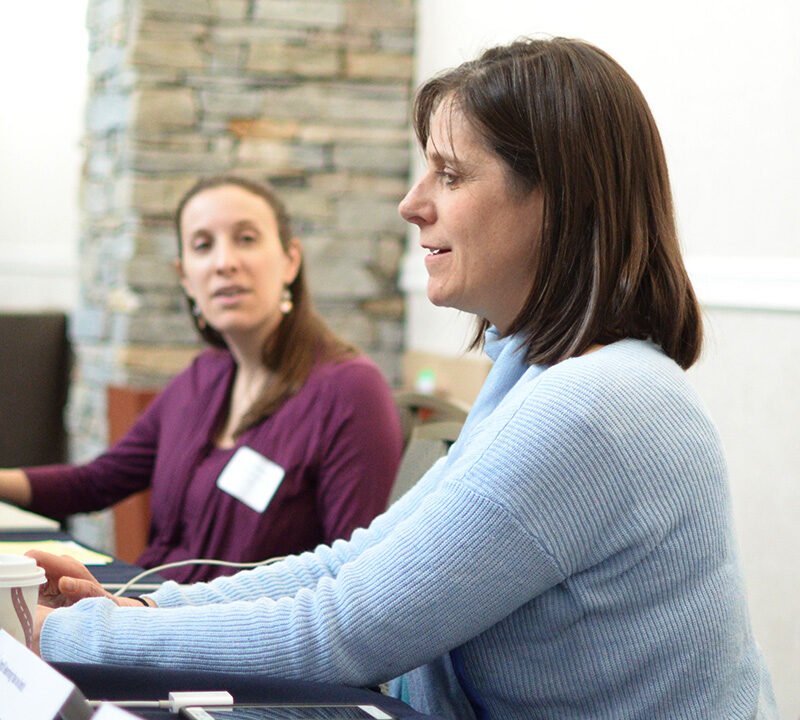A single act of kindness throws out roots in all directions, and the roots spring up and make new trees.
Amelia Earhart
Plant the seed, and watch it grow.
That’s the simple concept behind the New Hampshire UDL Innovation Network, a multiyear partnership between CAST and the New Hampshire Department of Education to build a statewide web of educators interested in implementing the Universal Design for Learning (UDL) framework in their classrooms, and then showing others how to build on that success.
The Universal Design for Learning concept is simple: Remove barriers to improve educational access and success for all learners. In New Hampshire, educators are discovering positive changes in a few classrooms can lead to better instruction, learning, and engagement for an entire state school system.
Now in its fourth year, the New Hampshire UDL Innovation Network includes more than 70 schools and 500 educators across the state who learn UDL in small teams, apply various methods in their own learning environments, and continue to share their progress through learning hubs available to the larger group.
Since the first year of implementation in 2018, teacher participation in the NH UDL Innovation Network has grown by more than 150%, and the number of teams participating has more than doubled.
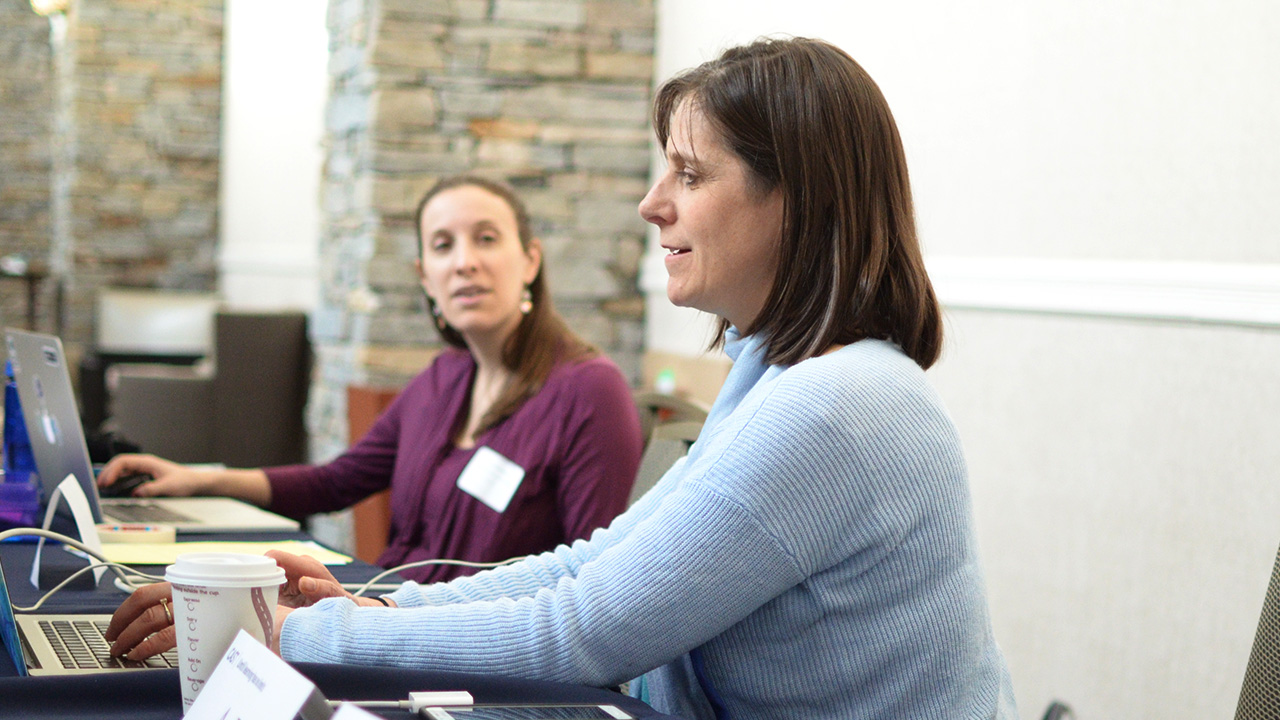
“Education is the most powerful way to make positive change in the world,” says CAST Director of Professional Learning Jennifer Levine, who credits the program’s success to a phenomenal implementation team at CAST, along with New Hampshire’s strong commitment to inclusive education.
“We’re working towards systemic change top-down and bottom-up,” Levine adds. “The goal of our statewide work is to deeply support practitioners at all levels of the education system and empower them to meet the work. The focus is on agency for anyone involved.”
Ideal for New Hampshire’s Commitment to All Learners
The concept behind Universal Design for Learning — a teaching framework with its own language that helps educators remove barriers to learning and levels the playing field for all learners — intrigued Mary Lane, an educational consultant hired by the New Hampshire Department of Education to design, implement, and sustain accessibility in the classroom.
“We were retrofitting everything, making it up as we go, from the ground up for each individual,” Lane says of the efforts she made before implementing the UDL framework. “We had to get away from every child needing a device, or we give everybody the same device, no matter if it’s really working, and look at the individual students.”
As part of her research to find a more individualized learning approach for New Hampshire’s students, Lane discovered how UDL is not a one-time project, initiative, or strategy — as each of those eventually ends. UDL is an ongoing way of thinking, a lens through which learners view the world differently, and an iterative process.
Seemingly a perfect fit for New Hampshire’s educational system, Lane submitted a UDL Network proposal to the newly appointed state education commissioner.
Lane explained her desire to move the UDL network forward and the commissioner believed he could get it to the governor. Together, they brought in the director from CAST to answer questions and solidify a plan.
“The commissioner took the proposal right to the legislature and said ‘This is what we need to do,’” Lane shares.
During the process, Lane got a call from a state senator who said the information about UDL was over his head and asked for clarification.
“I said, ‘When you’re in a room of people and you don’t feel a part of it, how do you feel?’” Lane explains. “He answered, ‘I don’t feel engaged.’ I said, ‘Bingo.’”
Engaging every single student to become strong, independent learners is exactly what the UDL Innovation Network strives to do, Lane says.
In March 2018, CAST embedded implementation specialists with small teams of educators in all four corners of New Hampshire to build a network of teachers and teacher support personnel committed to learning the UDL framework and how to apply it in their own teaching environments.
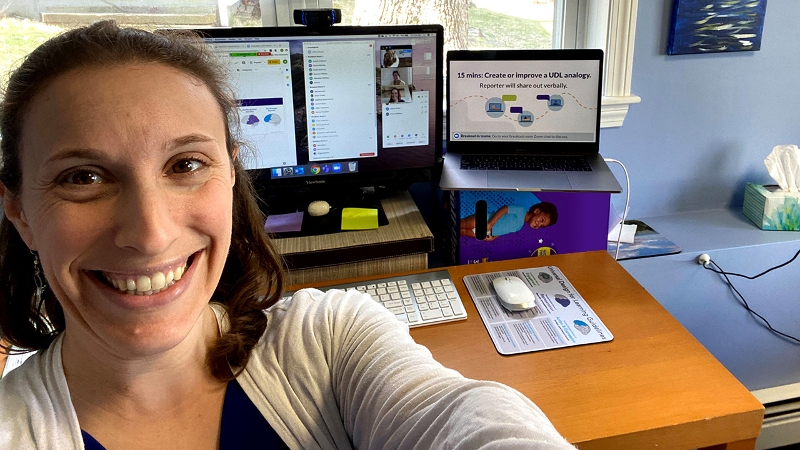
“UDL is a pedagogical framework that helps educators think about the way we’re designing instruction. Learning environments, lessons, classrooms, schools, lunchrooms, community, building — everything that goes on at school,” explains CAST Innovation Network Manager Ari Fleisher. “It’s just the way you look at things and design them to be more inclusive and effective.”
It’s simply about transforming classrooms to support student and teacher agency on the path to critical thinking and independent learning, Levine says.
“We’re contributing to breaking down — even if they’re not intentional — systems that marginalize students, and changing how education is done, so we aren’t replicating traditional power structures. We’re really giving equitable opportunities to all students,” Levine says.
Taking Time to Step Back to Move More Students Forward
Educators often teach alone in their classrooms without the opportunity for peer feedback. There’s no time to watch each other teach to discover new and different ways to bring learning to students. They often must teach specific curriculums, meet state standards, and follow particular timetables, in an effort to advance the material by certain dates.
Combine an already time-strapped educator with a classroom full of students who all learn differently, and how do you overcome learning barriers and create expert learners?
“UDL celebrates that diversity,” Levine says. “Traditional teaching and learning from the old factory model tried to make all learners the same. We lose a lot when we make everyone the same. And so, celebrating how we’re different and how we each contribute differently is a beautiful thing.”
In New Hampshire, teaching differently means adopting a more innovative view.
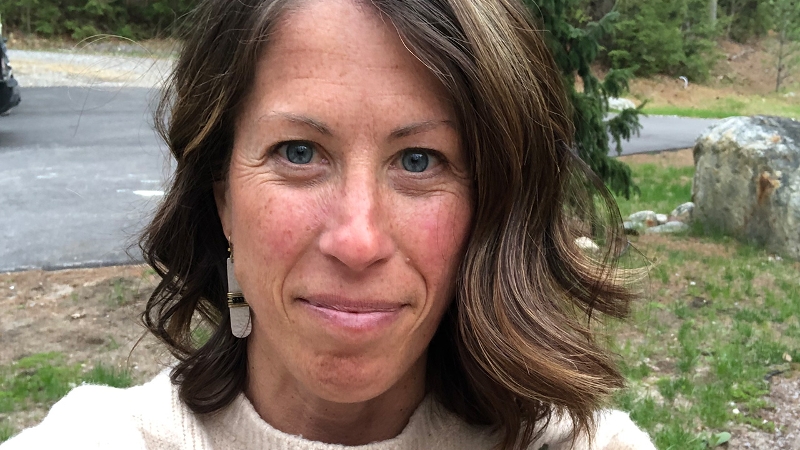
Janet Eccleston, Student Services Administrator in New Hampshire
“A lot of school systems have bought massive curriculums, and you turn the page of the textbook, regardless of who knows what, and the days fly,” says Janet Eccleston, Student Services Administrator at Campton Elementary School, and a UDL network educator.
“I think time is a barrier for many teachers and many kids,” Eccleston adds. “In some ways jam it into them, and there’s not just the pace of school. It’s life in general. A lot of kids get pulled through. I think some of the UDL principles support the opportunity of just slowing that down, if you can, to know how to teach wider and deeper.”
To illustrate her point, Eccleston relays a story about a middle school math teacher, who struggled to let go of traditional teaching methods and allow some students to move around or stand up during his instruction. “He’s an algebraic thinker,” Eccleston says. “Everything is linear. Everything has a beginning and an end, and everything has to be equal. Sometimes classroom management was an area of struggle, because the kids needed to move. So, one of our adjustments was his seating for the kids.”
Following UDL best practices, Eccleston’s group recommended getting a rug for his classroom. The students were allowed to sit or lay on the rug while he taught, and a unique thing happened. The kids engaged more. They learned better. And the teacher even shifted from insisting students use pencil and paper to working on whiteboards.
“We had to coach him through letting go of the traditional ways,” Eccleston says. “He found the kids performed well, enjoyed it, and gave him good feedback.”
It also gave Eccleston a foot in the door to discuss other UDL best practices with the teacher and gain his support.
“UDL is flexible and speaks to a lot of people,” Eccleston says. “The more UDL-like a teacher can be, the better the student engagement, whether the teacher realizes it or not. The math teacher even ended up participating in instructional rounds.”
Through the NH UDL Innovation Network, instructional rounds provide the time and space for teachers to observe each other while teaching. They provide observations, not criticisms or critique, and simply document what they see happening in the classroom.
“People wondered what we were doing? We told them, ‘We’re just watching each other teach, and it’s fun!’” Eccleston says. “We wrote down things we saw on sticky notes — it was very positive. Then we placed them in a public area in the building without names, which was intentional. Other teachers started to ask ‘What is this?’ and became interested.”
Eccleston says the next time her team conducted instructional rounds, they doubled their teacher involvement by just modeling a small part of UDL after the first rounds.
UDL Innovation Network Gives Agency for Teachers and Students
It’s difficult to step back from the day-to-day operation of a school to really understand the big picture in terms of teaching, and to question why a school is there to begin with — what is its true function? With CAST, this conversation is happening on some level, all the time.
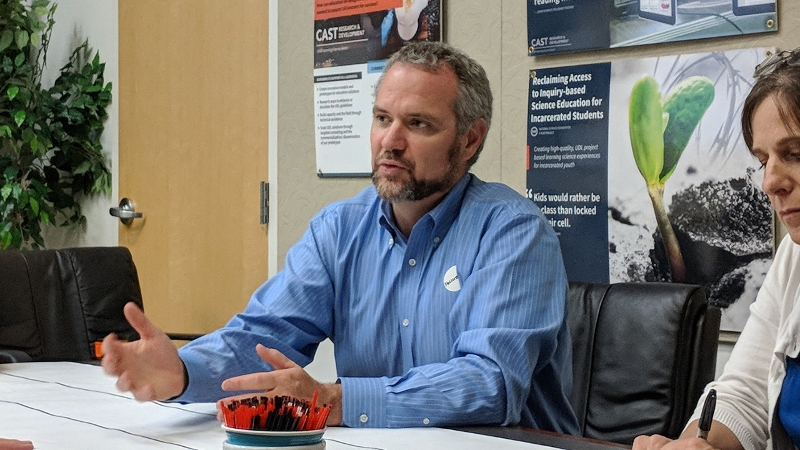
And the goal of the four CAST implementation specialists working with New Hampshire educators is to facilitate that conversation, help teachers establish goals, and guide them as they shape their own experience.
“In New Hampshire, we have given professional learning back to the teachers of the schools,” says Bill Wilmot, one of the four CAST implementation specialists. “I think that’s probably the most innovative and wonderful piece about the design, as well as the willingness of the teachers to open their classroom doors, to talk about instruction, and meeting the needs of all learners while being vulnerable in that process.
“It’s really just giving voices back to the teachers, to own their own learning,” he adds.
Talking about the concepts, using the UDL language, and modeling the framework for fellow educators creates an environment where all students and teachers can be successful.
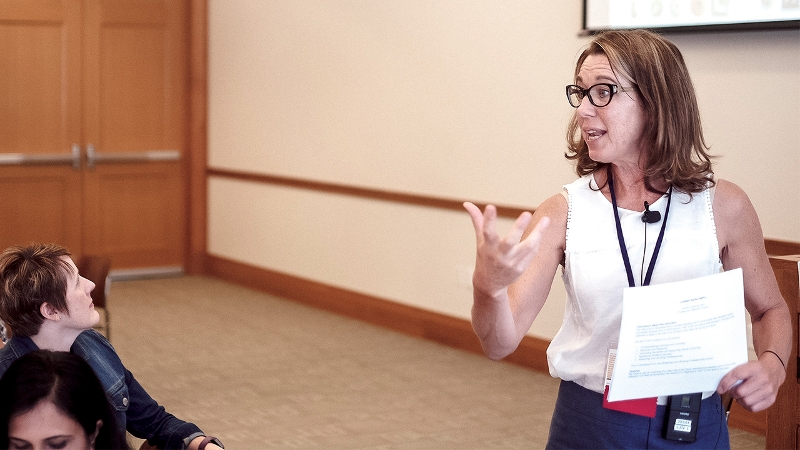
“CAST teaches about UDL, and the professional learning team does all this cool stuff, but what we’re doing in these examples of teacher agency is really using UDL to design that professional learning,” says CAST Implementation Specialist Susan Shapiro.
“What we’re doing with teachers is what we’re asking teachers to do with learners,” she adds. “And I think that’s the strength of the work we’ve been doing.”
Story by Red Pen Content Creation.
Interested in bringing UDL to your state?
CAST partners with states, districts, and schools to build understanding, design strategies, and support the implementation of Universal Design for Learning (UDL), accessibility and inclusion, professional development, and more.
